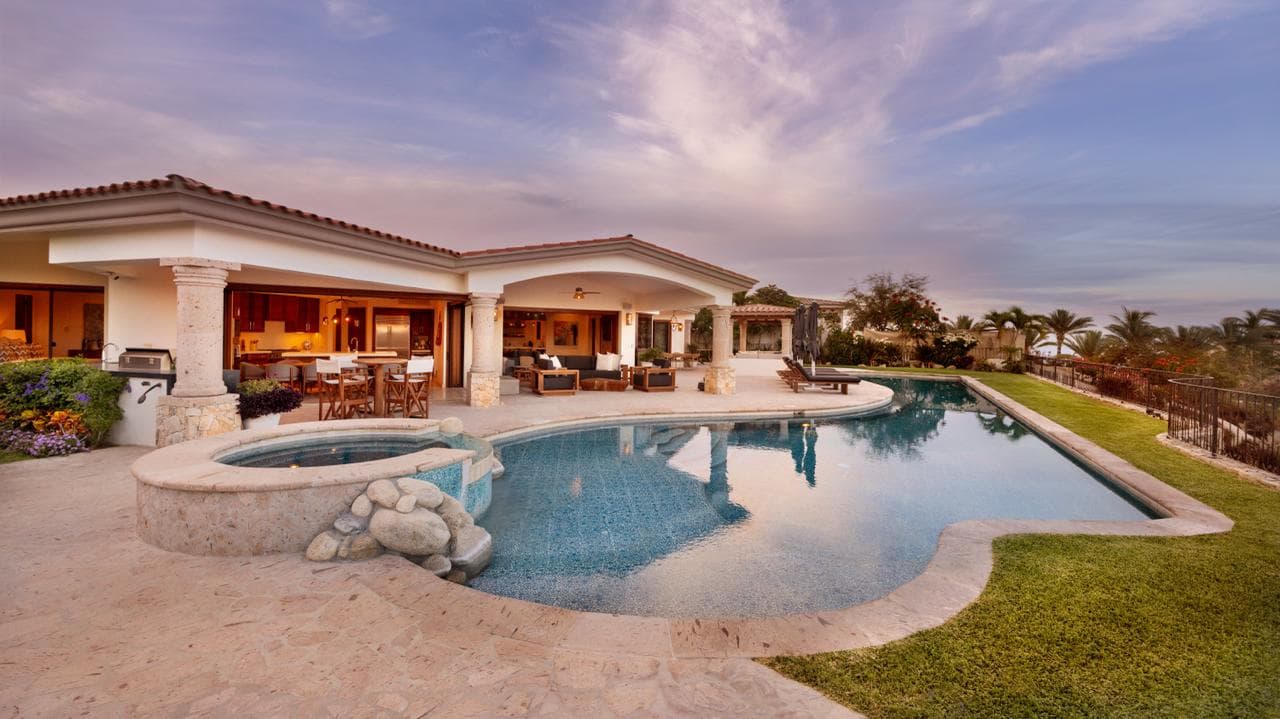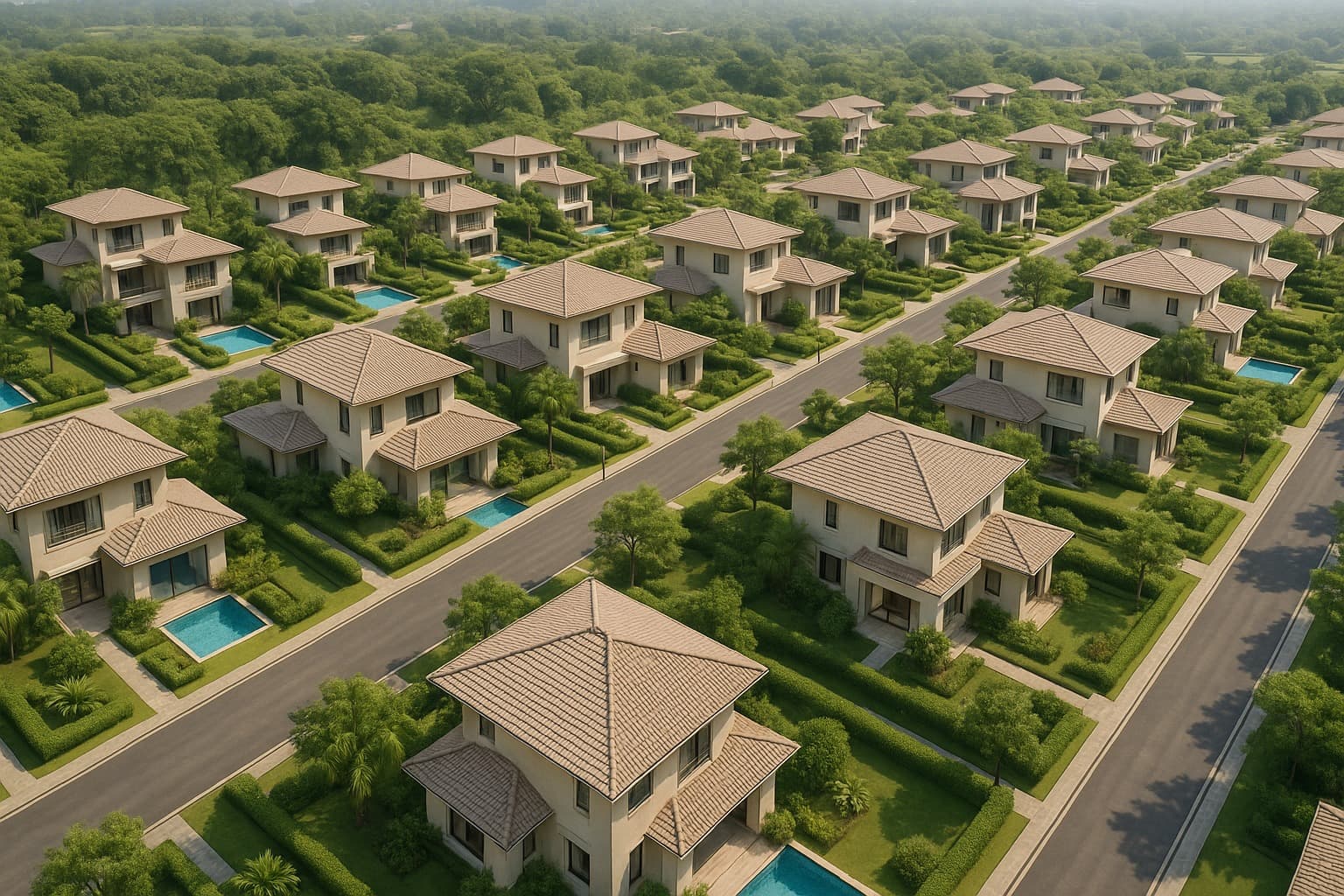Luxury Real Estate Trends in India: A 2025 Outlook
Summary
India's luxury real estate market in 2025 is booming, driven by demand for experience-driven homes with smart technology, sustainability, and integrated amenities. NRIs and HNIs fuel growth in cities like Mumbai, Delhi-NCR, and Pune.

Luxury Real Estate: Top Trends in 2025?
Luxury real estate in India is no longer just about owning a home—it’s about claiming a lifestyle, a statement, and a haven that mirrors ambition and taste. In 2025, the premium housing segment continues to flourish, driven by HNIs, NRIs, and successful entrepreneurs seeking properties that combine exclusivity, elegance, and convenience. From Mumbai’s towering penthouses overlooking the Arabian Sea to Pune’s sprawling villas surrounded by greenery, and Delhi’s posh urban enclaves, the demand for ultra-luxury homes is soaring like never before.
The key shift in India’s luxury market is the move from mere opulence to experience-driven homes. Today, buyers seek residences that offer wellness, security, connectivity, and technology integration. A high-end apartment in South Mumbai is no longer just a place to live—it’s a private retreat with personalized amenities, concierge services, and smart home systems that make life seamless.
Surge in Demand for Ultra-Luxury Homes
One of the most notable trends in 2025 is the explosive demand for ultra-luxury homes. This surge is being driven by multiple factors: rapid wealth accumulation, global exposure, and a desire for refined lifestyles. Buyers are no longer satisfied with conventional spaces—they want panoramic city views, private terraces, rooftop pools, and interiors designed by celebrated architects.
Mumbai remains the gold standard for premium housing, especially in Bandra, Juhu, and South Mumbai. A penthouse here is more than an address—it’s a trophy that signifies prestige. Delhi-NCR is seeing similar growth, with high-end apartments and bungalows in Golf Links, Vasant Vihar, and Lodhi Estate catering to diplomats, CEOs, and returning NRIs. Pune is also emerging as a hotspot, with villa communities offering a calm suburban life while remaining well-connected to the city’s commercial hubs.
Architectural Innovation and Smart Homes
Luxury homes in 2025 are defined by architectural ingenuity and technology. Buyers increasingly prefer open floor plans, double-height ceilings, modular kitchens, and spa-inspired bathrooms. Every corner is designed to balance aesthetics and functionality.
Smart homes have become a non-negotiable feature in this segment. From automated lighting and climate control to integrated security systems and voice-assisted devices, tech integration enhances convenience and lifestyle. Modern luxury buyers want homes that respond to their needs, creating an environment that is intuitive, personalized, and secure.
Sustainable Luxury
Another striking trend is the emphasis on sustainability. Buyers are not just looking for luxury—they are looking for responsible luxury. Green building practices, solar energy, rainwater harvesting, natural ventilation, and eco-friendly materials are gaining prominence. Landscaped gardens, rooftop greenery, and wellness zones are increasingly integrated into designs, creating serene sanctuaries in the heart of bustling cities.

Luxury real estate in 2025 blends opulence with environmental consciousness, reflecting a new mindset where buyers value health, wellness, and sustainability alongside traditional markers of wealth.
Integrated Luxury Communities
Developers are moving beyond standalone properties to integrated luxury communities. These developments offer a full lifestyle package—fitness centers, yoga studios, swimming pools, art galleries, boutique retail, and fine dining options within gated enclaves. The focus is on convenience, exclusivity, and community living.
Such integrated projects appeal to high-profile buyers who value privacy but also appreciate curated social experiences. They provide security, premium amenities, and an environment where residents can interact selectively with like-minded peers.
NRI Investment Driving Growth
NRIs continue to be a major driver of luxury real estate in India. They are attracted by prime locations, robust legal protections, and potential capital appreciation. Cities like Mumbai, Delhi-NCR, Pune, and Bengaluru remain top choices due to established infrastructure, international schools, healthcare, and global connectivity.
Emerging luxury hotspots in Pune and Goa offer NRIs second homes or vacation properties, combining tranquility, lifestyle, and strong investment potential. The mix of homeownership, lifestyle, and ROI makes Indian luxury real estate highly appealing to NRIs.
Price Appreciation and Investment Potential
Despite high entry costs, premium properties offer strong investment value. Scarcity of prime land in urban hubs, coupled with rising demand from HNIs and NRIs, ensures sustained property appreciation. Developers offer pre-launch discounts, flexible payment plans, and bundled amenities, making high-end investment more accessible.
The luxury segment’s resilience to moderate economic slowdowns further cements its status as both a lifestyle choice and a strategic investment. Over time, carefully chosen luxury homes can deliver both financial and experiential returns.
Lifestyle-Centric Amenities
Modern luxury buyers prioritize experiences over space. Private home theaters, indoor gyms, infinity pools, meditation zones, and spa facilities are standard features. Wellness has emerged as a key driver, with spaces designed to support health, relaxation, and mental wellbeing.

For urban elites balancing demanding careers, these amenities create an all-inclusive lifestyle, blending convenience, indulgence, and community within their residence. It’s not just a home—it’s a complete ecosystem of comfort and sophistication.
Emerging Markets in Luxury Real Estate
While Mumbai and Delhi-NCR remain epicenters, cities like Pune, Gurugram, Hyderabad, and Kochi are witnessing niche ultra-luxury launches. These developments focus on modern architecture, serene surroundings, and integrated amenities. Tier-2 cities are also attracting affluent buyers looking for premium villas and apartments, offering a peaceful lifestyle without compromising connectivity.
Developers in emerging luxury markets are emphasizing exclusivity, smart living, and sustainability to entice buyers seeking both investment and lifestyle benefits.
Challenges in the Luxury Segment
Despite growth, luxury real estate faces challenges. Limited prime land, rising construction costs, regulatory approvals, and project delays are hurdles for developers. Additionally, luxury markets are sensitive to economic fluctuations, discretionary spending trends, and global financial conditions.
However, demand from affluent buyers remains robust. Developers mitigate risks through innovation, integrated communities, and tailored offerings that align with the expectations of HNIs and NRIs.
Conclusion
The Indian luxury real estate market in 2025 is a dynamic blend of opulence, innovation, and lifestyle. Demand for ultra-luxury properties continues to rise across metro and emerging cities, fueled by HNIs, NRIs, and domestic entrepreneurs. Developers are responding with smart homes, sustainable construction, integrated communities, and wellness-focused amenities. Beyond premium square footage, luxury buyers seek experiences, exclusivity, and investment potential. With strong price appreciation, lifestyle-centric offerings, and innovative designs, India’s luxury real estate market continues to evolve as a coveted space for living, investing, and indulging in the finest of life’s comforts.
Summary (100 Words) India’s luxury real estate sector in 2025 is thriving, driven by HNIs, NRIs, and affluent domestic buyers seeking premium lifestyles. Key trends include ultra-luxury villas, penthouses, smart home technology, sustainable construction, and integrated communities with wellness and lifestyle amenities. Cities like Mumbai, Delhi-NCR, Pune, Bengaluru, and emerging hubs are witnessing strong demand and property appreciation. Buyers now prioritize experience, exclusivity, and convenience alongside investment potential. While challenges like regulatory approvals and high construction costs exist, the segment remains resilient. Luxury real estate in India today combines sophisticated design, modern amenities, and lifestyle-focused living, making it aspirational and investment-worthy.
